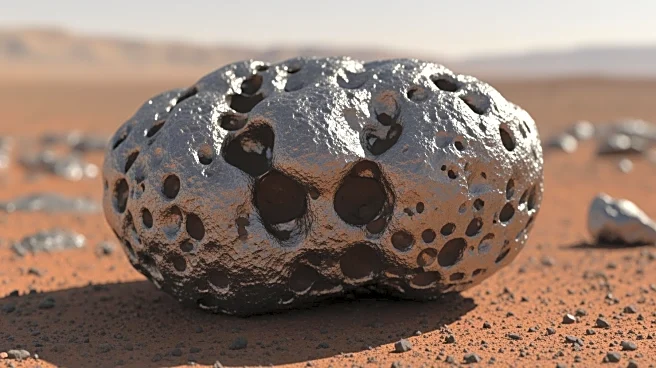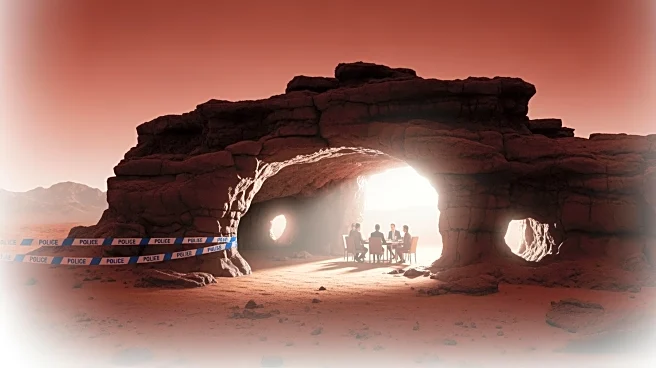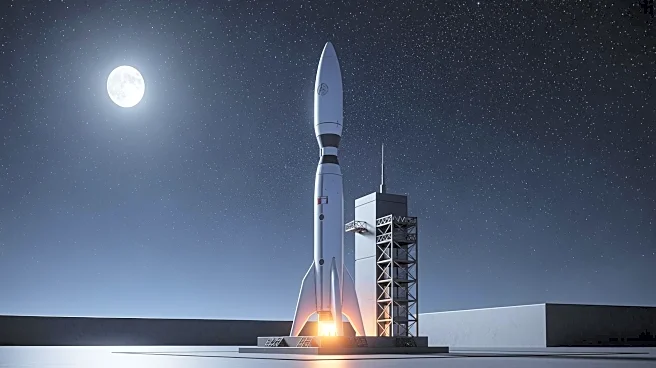What's Happening?
NASA's Mars Perseverance rover has identified an unusually shaped rock, named 'Phippsaksla,' during its exploration of the Martian surface. The rock, measuring approximately 80 centimeters across, stands
out due to its sculpted appearance, differing from the surrounding flat and fragmented rocks. Using the SuperCam instrument, Perseverance discovered that the rock is high in iron and nickel content, which is typically associated with iron-nickel meteorites formed in the cores of large asteroids. This suggests that 'Phippsaksla' may have originated elsewhere in the solar system. The discovery was made on September 19, 2025, marking Martian day 1,629 of the Mars 2020 mission.
Why It's Important?
The identification of 'Phippsaksla' as a potential meteorite is significant as it adds to the understanding of Mars' geological history and the presence of extraterrestrial materials on the planet. Previous rovers, such as Curiosity, Opportunity, and Spirit, have encountered similar meteorites, contributing to the knowledge of Mars' surface composition and the impact of space debris. If confirmed as a meteorite, this discovery could provide insights into the solar system's formation and the processes that have shaped Mars over time. It also highlights the capabilities of the Perseverance rover in conducting detailed scientific investigations on the Martian surface.
What's Next?
Further investigation is required to confirm the status of 'Phippsaksla' as a meteorite. The Perseverance team will continue to analyze the rock's composition and structure to determine its origins. This could involve additional imaging and spectroscopic analysis to gather more data. Confirmation of its meteorite status would allow Perseverance to join the ranks of other Mars rovers that have studied extraterrestrial rocks, enhancing the scientific community's understanding of Mars and its interaction with space debris.
Beyond the Headlines
The discovery of potential meteorites on Mars raises questions about the planet's ability to capture and preserve extraterrestrial materials. It also prompts considerations of the implications for future Mars missions, including the search for signs of past life and the study of Mars' atmosphere and climate history. Understanding the distribution and composition of meteorites on Mars could inform strategies for future exploration and the potential for resource utilization.












